Suche
Neu
- MERRY X-MAS (cla_rei, 23.Dec.10)
- SHANGHAI'S YESTERDAY, TODAY AND TOMORROW (cla_rei, 13.Dec.10)
- ON SITE CLOSE UP (cla_rei, 13.Dec.10)
- IN THE SPOTLIGHT FOR ONE MOMENT (cla_rei, 13.Dec.10)
- CONSTRUCTION LOOPS IN SHANGHAI (cla_rei, 13.Dec.10)
Links
Navigation
Meta
Archiv
- December 2025MonTueWedThuFriSatSun12345678910111213141516171819202122232425262728293031
RSS
Thursday, 23. December 2010
MERRY X-MAS
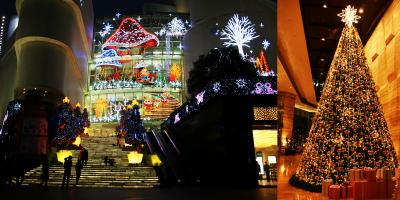
cla_rei am 23. December 10
|
Permalink
|
0 Kommentare
|
kommentieren
Monday, 13. December 2010
ON SITE CLOSE UP
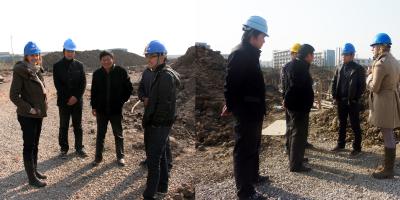
Last week we got the opportunity to visit two special construction sites just outside of Shanghai. Both buildings will meet high energy and quality standards and are being realized in cooperation with the German Chamber of Commerce in China.
One is part of the German Industrial Park in Kunshan as a starting point for German production business in China. At the time visiting, the first group of migrant workers had arrived to set up the dormitories for future migrant workers hired on this site.
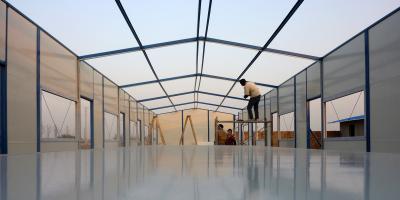
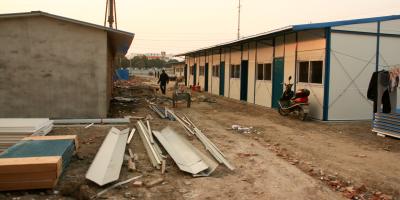
The other project is part of the Sino-German Training School with a 3 year vocational college program in Taicang. Foundation work for the factory teaching houses had started when we were introduced to the site and the dormitories were already filled with around 40-50 workers.
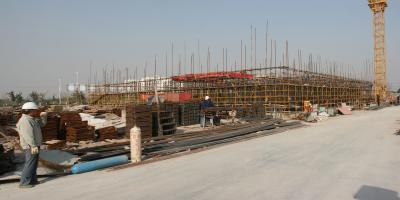
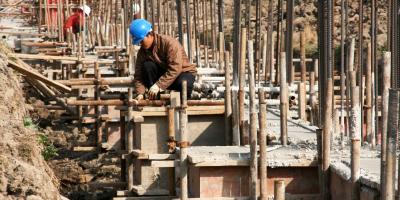
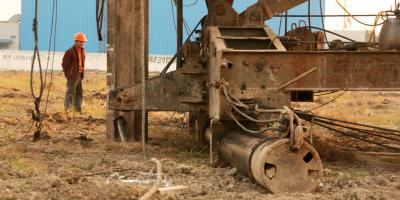
We were received with generous hospitality of construction managers and workers. For this we want to thank Liu Han, who was helping us a lot - especially with conducting the interviews.
cla_rei am 13. December 10
|
Permalink
|
0 Kommentare
|
kommentieren
CONSTRUCTION LOOPS IN SHANGHAI
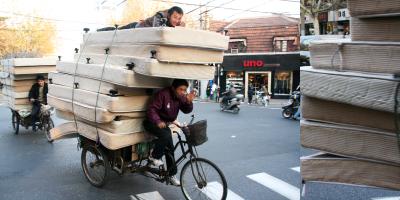
relocation
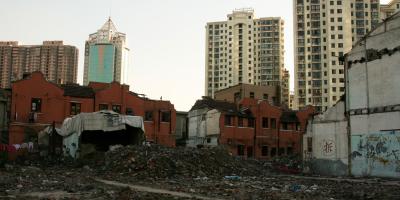
demolition

construction
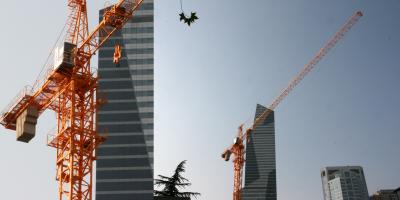
building towers
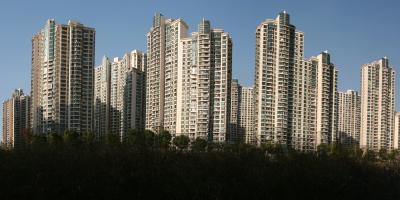
intensify!
cla_rei am 13. December 10
|
Permalink
|
0 Kommentare
|
kommentieren
IN THE SPOTLIGHT FOR ONE MOMENT
“Poverty steals a lot of things, like your home and car and food, but it also steals something on the inside. Help-Portrait feeds that something on the inside.”
— Annie Downs, Help-Portrait Events Coordinator
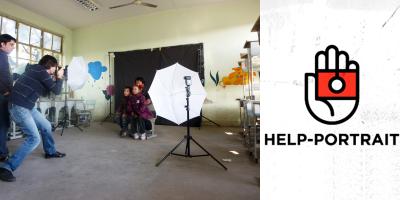
Help Portrait is a global movement initiated by the online photo community Flickr. Photographers around the world go out and take photos of people, who have never had the possibility to get their portrait shot – this year on Dezember 4th.
While each city and community offers different approaches to this concept, the Shanghai-based Flickr photographers met in a school for migrant worker children in Minhang district. The location was found by Xintu, an NGO focused on helping Shanghai’s migrant communities.
Thanks to Sue Anne Tay, author of the fascinating blog http://www.shanghaistreetstories.com/, we got an impression of what was happening behind the lenses during that day. She was one of the main organizers of Help Portrait 2010 in Shanghai and introduced us to the photo community here - a team of dedicated photographers, who organized the whole event.
The Flickr photo community Shanghai managed to set up professional photo studios within a few hours, including the management of the rush demand of people who wanted to get their portraits taken. Because of their big engagement before and during Help Portrait day we saw a lot of happy children running around, proudly showing their portraits.
— Annie Downs, Help-Portrait Events Coordinator

Help Portrait is a global movement initiated by the online photo community Flickr. Photographers around the world go out and take photos of people, who have never had the possibility to get their portrait shot – this year on Dezember 4th.
While each city and community offers different approaches to this concept, the Shanghai-based Flickr photographers met in a school for migrant worker children in Minhang district. The location was found by Xintu, an NGO focused on helping Shanghai’s migrant communities.
Thanks to Sue Anne Tay, author of the fascinating blog http://www.shanghaistreetstories.com/, we got an impression of what was happening behind the lenses during that day. She was one of the main organizers of Help Portrait 2010 in Shanghai and introduced us to the photo community here - a team of dedicated photographers, who organized the whole event.
The Flickr photo community Shanghai managed to set up professional photo studios within a few hours, including the management of the rush demand of people who wanted to get their portraits taken. Because of their big engagement before and during Help Portrait day we saw a lot of happy children running around, proudly showing their portraits.
cla_rei am 13. December 10
|
Permalink
|
0 Kommentare
|
kommentieren
Monday, 29. November 2010
THE HUKOU DILEMMA
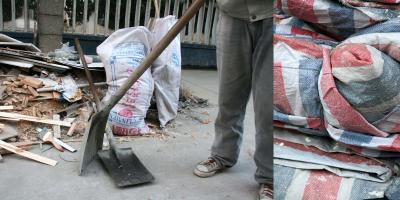
As China is turning towards globalization, the issue of the floating workforce is becoming more intense and complex. There are estimated over 130 million migrant workers in China today - people who are leaving their rural home town to find work and a better life in the city. But what do they really find?
A colleague of us wasn’t expecting to find them, when he was looking for a toolset to repair a machine in his company in Minhang, a huge industrial zone south-west of Shanghai. Currently over 17 construction workers are housing in the former craft room during reconstruction work on site. For two months these workers from Shanghai/Pudong are sleeping with thin sleeping bags each on one cardboard on the floor, washing themselves in the toilet-room.
Why nobody cares to provide better housing conditions for the workers? And why are the workers too afraid to claim any of their rights?
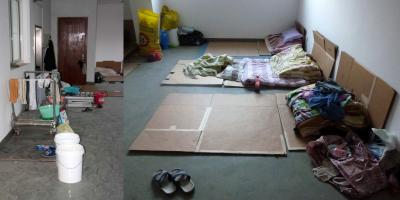
One reason why low-skilled migrants are subject to economic and social segregation is the Hukou system, China’s household registration system which identifies each person as a resident of a particular area. Before 1980 this system was inviolate, making it impossible for people to move to seek employment, educational opportunities or better public services. Even food coupons (liangpiao) and hospital treatments were bound to their designated Hukou. After China started its economic reform and open door policy, the government relaxed its restrictions on movement and allowed migrants to move to the cities with temporary residence permits tied to their work contracts. This had a major impact on China’s rapid urbanization as migration was now allowed to take place.
However, the inequality between the citizens with urban status and migrants holding certificates of temporary domicile is dramatic. Migrants are still denied education and medical care outside their Hukou area and the majority doesn’t even have the temporary permission, due to very unstable working conditions and mainly oral contracts.
In the next 5 year program China’s goal is to increase the quality of goods.
But as long as the dilemma of the Hukou system is unsolved, a higher work quality will not be achieved, because it assumes good working conditions.
cla_rei am 29. November 10
|
Permalink
|
0 Kommentare
|
kommentieren
Thursday, 25. November 2010
EVERYDAY LIFE
Looking through the window of the little kiosk, the Xiaomaibu, one gets a framed view on a typical scene of Shanghai street life: people passing by on bicycles with huge loads on their bike trailers, school kids in their school uniforms stopping to buy snacks, motor bikes honking. This scene is displayed as a movie inside of the original kiosk where it was shot – located now inside the ddmwarehouse gallery at the Red Town, Shanghai Sculpture Space.
For the exhibition “Double Act” 2010 the young Chinese artist Xu Zhifeng aka Shaw worked together with the German artist Petra Johnson to memorize this spontaneous, popular and original street culture that is slowly erased through the rapid urbanization. They have localized kiosks in Cologne, Liverpool and Shanghai and connected them with video feeds over the internet, so local residents can communicate across the world. (also see http://www.sss570.com/, http://www.ddmwarehouse.org and http://www.zoezhangbing.com)
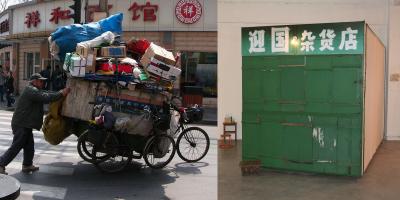
Shaw, who studied architecture in Shanghai, is dealing in his art work with Shanghai’s fast changing environment and China’s shift towards the West.
In “TALK WALK”, which was created for the 5th anniversary of the Dutch company Five Spices, he and Theresia Leuenberger documented a virtually interactive tour through Rotterdam and Shanghai taking place at the same time along the “same route”. The two participants never actually met in person but were each showing their intimate view on the city. They were part of the 5 international teams, who each worked in one of 5 disciplines (architecture, photography, paper-art, light design and dj’s). (http://www.fivespices.nl/)
We had the chance to meet him in person and see his working approach. Thank you Shaw!
For the exhibition “Double Act” 2010 the young Chinese artist Xu Zhifeng aka Shaw worked together with the German artist Petra Johnson to memorize this spontaneous, popular and original street culture that is slowly erased through the rapid urbanization. They have localized kiosks in Cologne, Liverpool and Shanghai and connected them with video feeds over the internet, so local residents can communicate across the world. (also see http://www.sss570.com/, http://www.ddmwarehouse.org and http://www.zoezhangbing.com)

Shaw, who studied architecture in Shanghai, is dealing in his art work with Shanghai’s fast changing environment and China’s shift towards the West.
In “TALK WALK”, which was created for the 5th anniversary of the Dutch company Five Spices, he and Theresia Leuenberger documented a virtually interactive tour through Rotterdam and Shanghai taking place at the same time along the “same route”. The two participants never actually met in person but were each showing their intimate view on the city. They were part of the 5 international teams, who each worked in one of 5 disciplines (architecture, photography, paper-art, light design and dj’s). (http://www.fivespices.nl/)
We had the chance to meet him in person and see his working approach. Thank you Shaw!
cla_rei am 25. November 10
|
Permalink
|
0 Kommentare
|
kommentieren
Thursday, 18. November 2010
GREENTOWN - MAKING OUR CITY MORE BEAUTIFUL
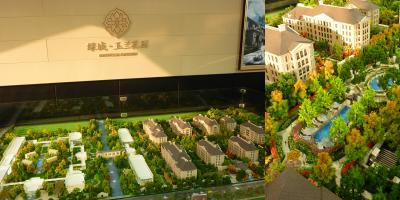
In Shanghai most foreigners live in pre furnished rent apartments inside a compound. These compounds are high rise apartment blocks, consisting of 3-12 buildings, up to 45 floors high, which are grouped around a park and surrounded by a high fence. Their melodious names like Rainbow City, Windsor Club, Modern Villas, Rainbow Asia, Elegant Garden Plaza, Beverly Hills, Shanghai Celebrity World, … and an elite infrastructure promise the ultimate living.
When expats are staying longer than the average couple of months, they often prefer to live further away from the city center in their own villa with garden. Last week we visited one of the leading property developers in China – the Greentown Group – which is focusing on luxury villa projects in China’s prosperous cities, especially in Zhejiang province. At the moment they are starting to sell villas in the gated community “Magnolia Garden” – for 4,500.- to 5,000.- €/m² The project, which is located between Shanghai’s business district and the airport in Pudong, is promoted for its sustainable development concept. Somehow we are expecting more from sustainable developers than planting trees and copying antique villas.
cla_rei am 18. November 10
|
Permalink
|
0 Kommentare
|
kommentieren
ZENDAI HIMALYAS CENTER
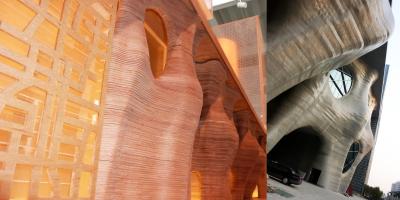
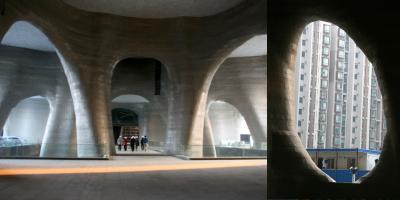
A new landmark of Shanghai Commercial Art designed by the Japanese
Architect Arata Isozaki.
The Himalayas Center, which’s estimated completion date is around Christmas, has been described on their homepage www.zendaihimalayas.com as “a perfect embodiment of the architectural ideal of combining nature with humanism”. Humanism is what seems to be missing when walking on the construction site of this three-dimensional freeform design. Right next to the new structure a row of shabby metal containers is housing workers for the period of construction. With less than 10m² the units are reminiscent of train compartments without any insulation – each inhabited by 6 migrant workers. One water supply for all workers for washing/cooking/drinking/showering is installed outdoors between two containers.
Although we’ve been dealing especially with the living conditions of migrant workers we were not prepared to walk into such intimate scenes on this construction site.
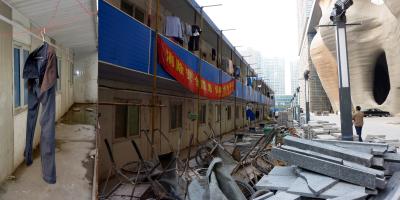
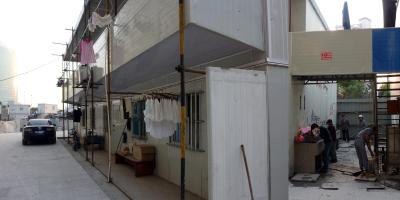
cla_rei am 18. November 10
|
Permalink
|
0 Kommentare
|
kommentieren